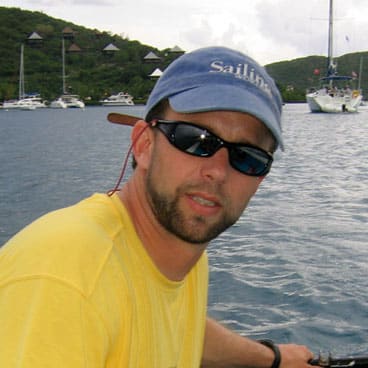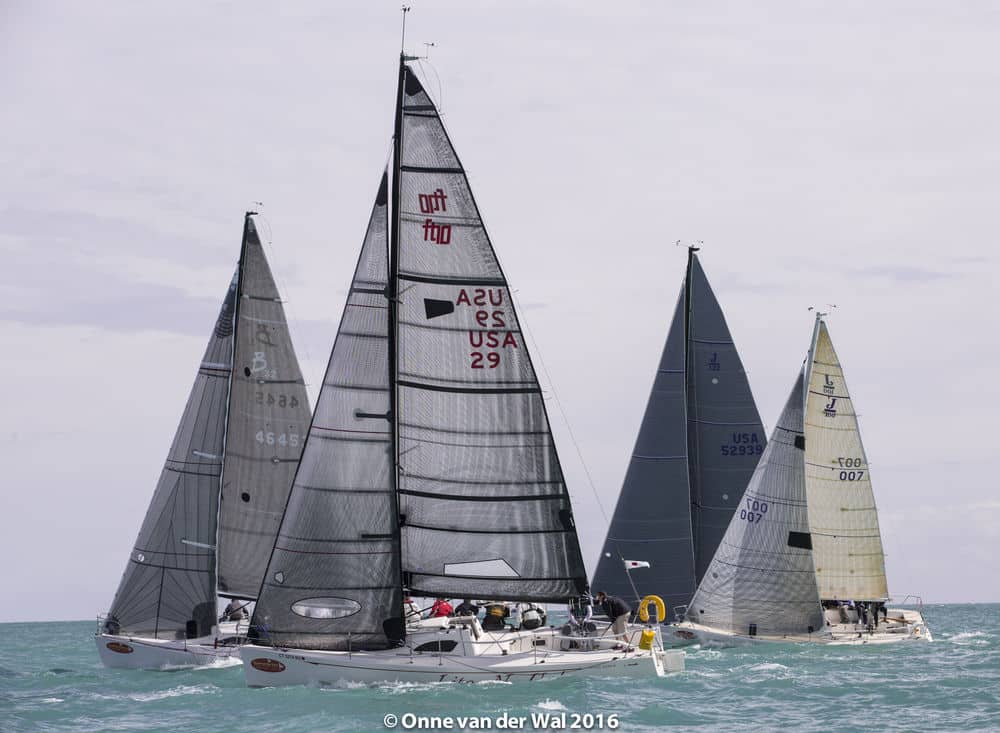
From the Archives: Calm Conditions
Stuart Walker explains why management of calm requires recognition that is transient. From the Experts “Tactics” from our March 1995 issue.

Stuart Walker explains why management of calm requires recognition that is transient. From the Experts “Tactics” from our March 1995 issue.

In this article from 1991, Stuart Walker explains why heads-up tactics and some quick forethought are often better than a red flag when it comes to dealing with Rule 54.3.

In this article from our February 1985 issue, world champion Ed Baird presents a simple, reliable method for finding the favored end of a finish line and adds some tips for getting there as quickly as possible.

Olympic gold medalist Robbie Haines shares his thoughts on when, where, and how to call a jibe set in a keelboat. From our April 1996 issue.

A first-time big boat tactician discovers that it’s not nearly as easy or as much fun when everyone else is expecting you to make the right calls.

Weigh the variables of a port or starboard approach to the weather mark. “Tactics” from our January 1997 issue.

Patience is a virtue when it comes to recovering from a bad start. “From the Experts” from our February 1997 issue.

Great starts or perfect beats are the stuff that dreams of made of. But when the occasional nightmare start or terrible mark rounding sabatoges your plans, there are ways to salvage a positive outcome. “Tactics” from our May 2011 issue.

When it comes down to a one-on-one situation, the competitor with the most match-racing savvy will likely come out ahead. “Tactics” from our March 2011 issue.

Observing your speed and height relative to boats around you is only half the battle. The other half is knowing how to make adjustments as conditions change.

Holding the inside track at the top of the beat can be a winning move. Just be patient and wait for an opening to get into the starboard-tack parade. “From the Experts: Tactics” from our November/December 2011 issue.

What does one of the most explosive boxers in history have to offer regarding leeward mark roundings? More than you think.

Stuart Walker explains why management of calm requires recognition that is transient. From the Experts “Tactics” from our March 1995 issue.

In this article from 1991, Stuart Walker explains why heads-up tactics and some quick forethought are often better than a red flag when it comes to dealing with Rule 54.3.

In this article from our February 1985 issue, world champion Ed Baird presents a simple, reliable method for finding the favored end of a finish line and adds some tips for getting there as quickly as possible.

Olympic gold medalist Robbie Haines shares his thoughts on when, where, and how to call a jibe set in a keelboat. From our April 1996 issue.

A first-time big boat tactician discovers that it’s not nearly as easy or as much fun when everyone else is expecting you to make the right calls.

Weigh the variables of a port or starboard approach to the weather mark. “Tactics” from our January 1997 issue.

Patience is a virtue when it comes to recovering from a bad start. “From the Experts” from our February 1997 issue.

Great starts or perfect beats are the stuff that dreams of made of. But when the occasional nightmare start or terrible mark rounding sabatoges your plans, there are ways to salvage a positive outcome. “Tactics” from our May 2011 issue.

When it comes down to a one-on-one situation, the competitor with the most match-racing savvy will likely come out ahead. “Tactics” from our March 2011 issue.

Observing your speed and height relative to boats around you is only half the battle. The other half is knowing how to make adjustments as conditions change.

Holding the inside track at the top of the beat can be a winning move. Just be patient and wait for an opening to get into the starboard-tack parade. “From the Experts: Tactics” from our November/December 2011 issue.

What does one of the most explosive boxers in history have to offer regarding leeward mark roundings? More than you think.
Sign up for Sailing World emails to receive features on travel destinations, event listings and product reviews as well as special offers on behalf of Sailing World’s partners.
By signing up you agree to receive communications from Sailing World and select partners in accordance with our Privacy Policy. You may opt out of email messages/withdraw consent at any time.